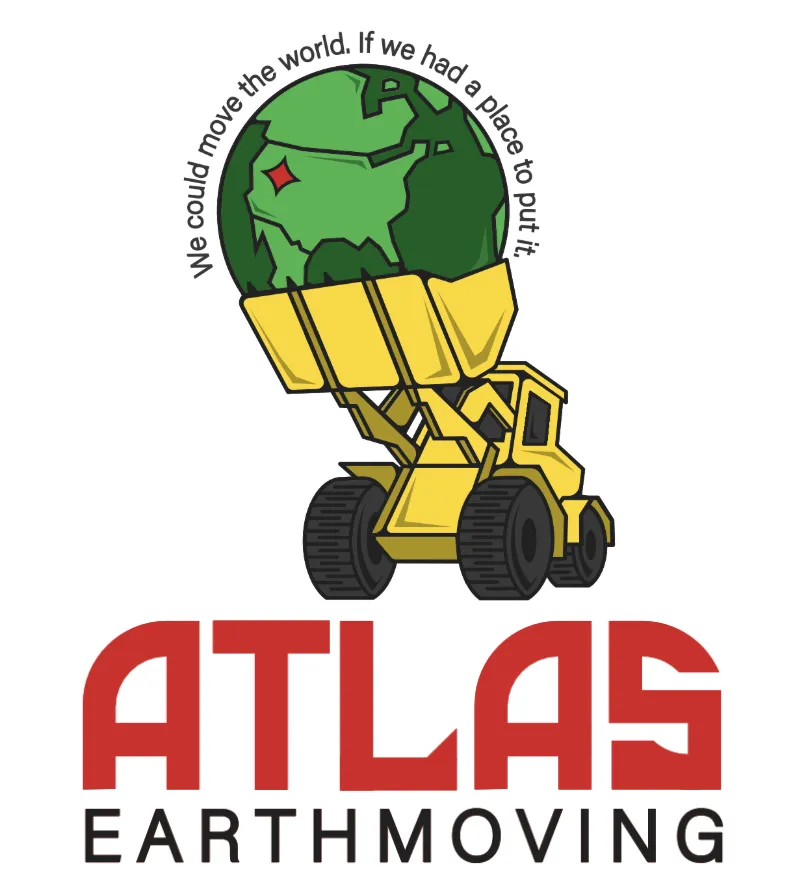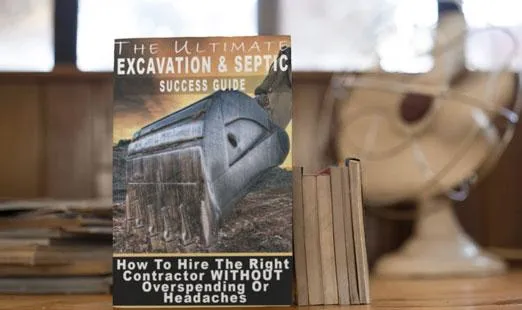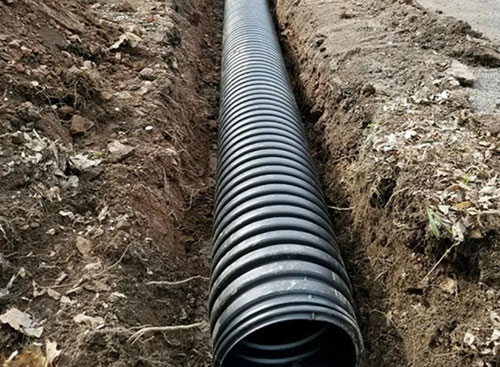
Serving Idaho Counties: Ada, Elmore, Boise, Gem and Owyhee
Drainage Systems near Ada County, Idaho
Atlas Earth Moving is Committed to superior quality and results!

AVOID COSTLY MISTAKES:
Do NOT hire an excavating contractor without first reading our free guide:
The ULTIMATE Excavation & Septic "Success Guide."

Drainage Systems near Ada County— Guide for Homeowners in Idaho
When you hear drainage, think of a simple goal: move water away from places it shouldn’t be. Drainage Systems near Ada County are designed to protect Idaho homes, yards, driveways, and foundations from pooling water, soil erosion, and freeze-thaw damage. Done right, a system quietly handles storms and snowmelt, keeps basements dry, and helps your landscape thrive. This page breaks down what these systems do, why they matter in Ada County’s climate and soils, and how to hire confidently.
How Can We Help?


What Drainage Systems near Ada County Actually Do
A good drainage plan starts with the lay of the land. Pros evaluate slope, soils, runoff paths, roof downspouts, and where water naturally wants to go. From there, they mix and match solutions such as French drains, surface drains, dry wells, channel drains, swales, regrading, culverts, catch basins, and gutter extensions. In Idaho’s varied seasons, the design must handle spring rains, summer irrigation, and winter freeze cycles. The result is a path of least resistance that moves water safely to a proper outlet, keeps structures dry, and protects the soil profile you’ve invested in.
The Core Benefits for Ada County Properties
Protect foundations and slabs by relieving hydrostatic pressure and directing water off footings.
Keep basements, crawlspaces, and garages drier, reducing musty odors and mold risk.
Stabilize yards and driveways, preventing ruts, mud, and frost heave damage.
Reduce erosion on slopes, protecting topsoil and landscaping investments.
Improve lawn and plant health by avoiding waterlogging and root rot.
Extend pavement life by limiting standing water and refreezing cycles.
Add resale confidence—buyers value visible water management and documentation.
Support safer winter access by cutting down on icy puddles and slick spots.
Benefits of Hiring for Drainage Systems near Ada County, Idaho
Hiring locally brings practical advantages. Idaho-savvy pros understand Ada County’s permitting norms, typical soil textures (loam to clay pockets), and common problem zones after heavy storms. They’ve seen how water migrates around foothill lots, valley floors, and infill neighborhoods. That experience helps you avoid guesswork. Reputable teams document grades, use washed aggregate and fabric correctly, choose durable pipe, and size outlets for real storm events—not wishful thinking. They also stand behind their work, so if you need an adjustment after the first big rain, you have help close by.
Systems and Components Explained in Plain Terms
French drain: A gravel-filled trench with a perforated pipe that intercepts and carries subsurface water.
Surface drain and catch basin: Grates that collect visible runoff from low spots and hard surfaces.
Channel drain: A linear grate set in concrete or pavers to catch water across driveways or patios.
Dry well or soakaway: An underground chamber that lets water infiltrate in suitable soils.
Swale and regrading: Shaping the ground to guide sheet flow gently to a safe outlet.
Gutter extensions: Direct roof runoff well away from the foundation to prevent saturation.
Sump interface: In wet basements, systems can work with a sump pump for controlled discharge.
See Our Excavation & Septic Services

✔️ Residential Excavation
✔️ Swimming pool excavation
✔️ Basement excavation
✔️Residential Sewer And Water Replacement
✔️Residential Septic Installation And Repair
✔️Concrete Preparation
✔️Small Commercial Site-Work
✔️Residential Gravel And Sight Work
✔️ Demolition
✔️ Large pond Construction
✔️ Small Pond Construction
✔️ Dozer work
✔️ Septic inspections
✔️ Trenching
✔️ Utilities Trenching
✔️ Foundation Repairs
Quality Services Launched FAST!

✔️ Septic system pumping
✔️ Septic installs traditional systems
✔️ Septic tanks - aerobic systems
✔️ Septic tanks - Plastic/poly
✔️ Septic tanks - Concrete
✔️ Drain field replacement
✔️ Grading, lot clearing
✔️ French Drains
✔️ Retaining walls
✔️ Sewer repairs
✔️ Drainage systems
✔️ Full site preparation
What Are You Waiting For?
How the Hiring Process Works—Step by Step
Step 1: Site walk and goals. Share photos, trouble spots, and how water behaves during storms. A pro notes slopes, soils, structures, utilities, and neighbors.
Step 2: Assessment and options. You receive a simple map or sketch with recommended components and why they fit your lot. Transparent pros explain tradeoffs and maintenance.
Step 3: Fixed-scope proposal. Expect a clear scope, materials list, depths, outlet locations, restoration plan, and timeline. No vague line items.
Step 4: Permits and locate. If permits or utility locates are needed, they’re handled before digging. Idaho frost depth and setbacks are considered.
Step 5: Installation. Trenches are cut, fabric and washed rock placed, perforated or solid pipe installed with proper fall, basins set, and outlets secured with riprap or splash blocks.
Step 6: Backfill and restore. Soil is graded, sod or seed is placed, and hardscapes are repaired to pre-project condition or better.
Step 7: Test and educate. Water tests confirm flow. You get simple maintenance notes: seasonal checks, clearing debris, and when to call for service.
What Good Looks Like in Ada County, Idaho
Quality work shows up in the details: trenches with consistent slope, filter fabric that wraps aggregate (but doesn’t clog the pipe), clean transitions from perforated to solid pipe, and outlets that won’t erode. Components are sized to real storms and nearby constraints. The finish grade sheds water from the foundation line, and restoration blends with your yard. Paperwork includes product types, depths, photos, and a simple as-built sketch so future projects don’t disturb the system.
Maintenance—Short, Simple, and Seasonal
Healthy drainage is mostly hands-off. Twice a year, clear leaves from grates, confirm downspout extensions are attached, and visually check outlets after big storms. Every couple of seasons, flush accessible lines if recommended, especially near heavy tree roots. If new hardscapes or landscaping go in, keep system routes clear and maintain a positive slope. Small habits prevent big headaches.
Budget and Timeline Expectations
Costs depend on access, trench length, depth, soil type, disposal needs, and hardscape restoration. Short residential fixes may be completed in a day or two; larger, multi-feature systems can take several days. A transparent proposal keeps allowances minimal and clarifies any rock excavation, hauling, or paving work upfront, so your final invoice matches the plan.
Ready to Move Water the Right Way?
If you’re seeing standing water, a soggy lawn, or damp walls after storms, it’s time for a site walk. With Drainage Systems near Ada County, Idaho, designed for Idaho seasons, you can protect structures, preserve landscaping, and gain peace of mind all year. Today.
Hours: Mon-Sun 7AM-8PM
Extended hours by appointment only.
Address: 7109 W Northview St, Boise, Idaho 83704
All rights reserved | Client Support Area
Facebook